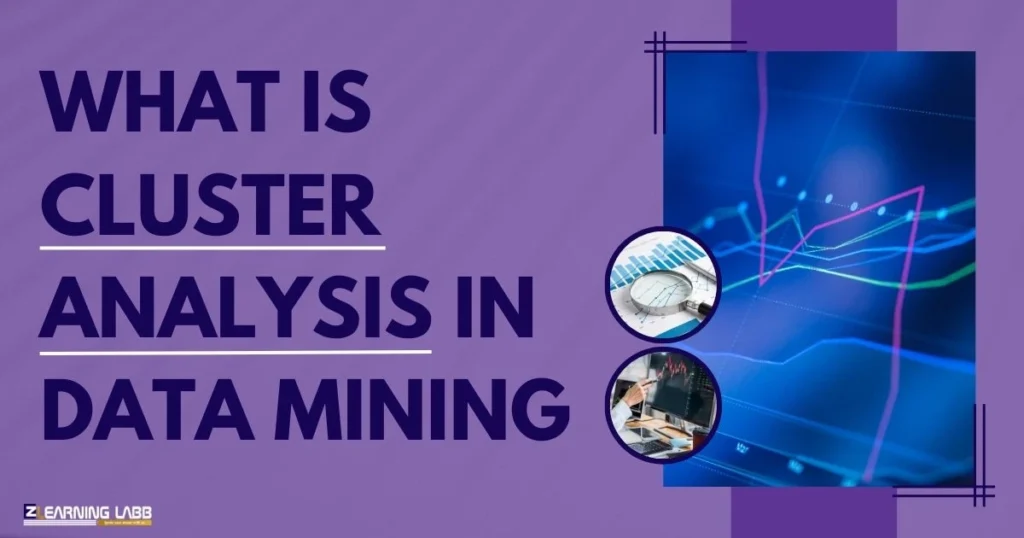What is Cluster Analysis in Data Mining: Companies are flooded with massive volumes of information – no doubt. Making sense of this data and extracting valuable insights is where data mining comes in. One of the most powerful tools within data mining is cluster analysis. But really, what is cluster analysis in data mining, and why should you care?
Let’s break it down in the simplest way possible,
What is Cluster Analysis in Data Mining?
Cluster analysis is a technique that groups a set of objects in such a way that objects in the same group (called a cluster) are more similar to each other than to those in other groups. It’s like sorting your wardrobe—shirts with shirts, jeans with jeans—not by size or colour alone, but by patterns and usage.
According to Tan, Steinbach, and Kumar in Introduction to Data Mining, “Clustering is the process of grouping a set of physical or abstract objects into classes of similar objects.”
So, when we talk about what is cluster analysis in data mining, we mean the process of automatically finding natural groupings in data without any prior labels.
Example: Let’s say a shopping app wants to understand user behaviour. Instead of manually labelling every customer, cluster analysis groups users into clusters based on their buying patterns. One cluster could be discount lovers, another might be high-end buyers, and so on.

Why Should You Learn Cluster Analysis?
If you’re a student or professional in the field of analytics, enrolling in Ze Learning Labb’s Data Science or Data Analytics course can be a game-changer. These courses teach you how to use tools like Python, R, and SQL to apply cluster analysis in real-world scenarios.
And if you’re into marketing, Ze Learning Labb‘s Digital Marketing course explains how clustering helps segment customers for targeted campaigns!
Types of Cluster Analysis in Data Mining
Understanding the types of cluster analysis in data mining helps you decide which method suits your data and goals. Here are the most common types:
1. Hierarchical Clustering
This method builds a hierarchy of clusters, either from the bottom up (agglomerative) or from the top down (divisive).
Popular for visual representation using dendrograms.
2. Partitioning Methods
These divide data into distinct non-overlapping subsets or clusters. The number of clusters is usually predefined.
One popular algorithm under this type is K-Means Clustering, which aims to minimize the distance between data points and their cluster centroids.
3. Density-Based Clustering
It forms clusters based on the density of data points in a region. DBSCAN is a widely used algorithm here.
4. Model-Based Clustering
Assumes a statistical model for each cluster and finds the best fit for the data.
These types of cluster analysis in data mining vary based on how they treat data points and structure clusters.
Partitioning Methods in Cluster Analysis
Among the partitioning methods in cluster analysis, K-Means is hands down the most widely used. Here’s how it works in simple terms:
- Choose the number of clusters (K)
- Assign each point to the nearest cluster centre
- Update the cluster centres based on the assigned points
- Repeat until the centres stop moving
This is ideal when you know how many clusters you want. But what if your data is more complex?

Ward’s Method Cluster Analysis
That’s where Ward’s method cluster analysis comes in—a type of hierarchical clustering technique. It works by minimizing the total within-cluster variance. In simple words, it groups data in such a way that the difference within each group is as small as possible.
Use case: In the healthcare industry, Ward’s method cluster analysis is used to group patients based on similar symptoms or diagnoses, which helps in personalised treatment.
Application of Cluster Analysis
Cluster analysis isn’t just for techies. It’s everywhere—here’s a look at the most practical application of cluster analysis across industries:
1. Retail and E-commerce
- Customer segmentation
- Inventory management
2. Healthcare
- Grouping patients based on diagnosis
- Drug discovery patterns
3. Banking and Finance
- Credit risk analysis
- Customer profiling
4. Education
- Student performance grouping
- Curriculum personalization
5. Digital Marketing
- Target audience segmentation
- Behavioural advertising
Ze Learning Labb teaches these applications practically in their Data Analytics and Digital Marketing courses, making it easier to understand how clustering works in the real world.
Example Dataset for Cluster Analysis
Let’s bring some practicality into this.
Here’s a sample example dataset for cluster analysis—a customer dataset of an online store:
| Customer ID | Age | Annual Income (₹) | Spending Score |
| 101 | 23 | 4,00,000 | 78 |
| 102 | 45 | 12,00,000 | 45 |
| 103 | 33 | 6,50,000 | 60 |
| 104 | 29 | 5,00,000 | 85 |
| 105 | 40 | 10,00,000 | 30 |
Using this, you can create clusters like:
- High Income, Low Spending
- Low Income, High Spending
- Average Income, Balanced Spending
This example dataset for cluster analysis helps businesses target the right audience with better offers.
Difference Between Cluster and Factor Analysis
Let’s clear the confusion between these two popular techniques.
| Features | Cluster Analysis | Factor Analysis |
| Purpose | Group similar data points | Identify underlying variables |
| Data Type | Usually categorical or continuous | Continuous |
| Output | Clusters (groups) | Factors (latent variables) |
| Application | Market segmentation, customer profiling | Psychometric analysis, social sciences |
So, the difference between cluster and factor analysis is that while clustering groups similar records, factor analysis identifies hidden relationships between variables.
Ever thought how Netflix knows what to recommend you next? Yep, cluster analysis.
Or how Amazon groups products under “People who bought this also bought…”? You guessed it again—cluster analysis. Now that you know what is cluster analysis in data mining, can you think of any place where you see this around you?

But…..hold on…there’s more…
If this got you curious, and you want to learn how to actually do all this with tools like Python, R, or even Excel — Ze Learning Labb offers hands-on courses in:
- Data Science – Perfect for beginners to advanced learners.
- Data Analytics – Dive deep into real-world datasets.
- Digital Marketing – Understand how data works behind campaigns.
Learning how to use cluster analysis in your work can seriously upskill you—and who doesn’t want that?
Key takeaways
- What is cluster analysis in data mining? It’s a way to automatically group data based on similarities.
- There are several types of cluster analysis in data mining, including hierarchical, partitioning, and density-based.
- Partitioning methods in cluster analysis, like K-means, work best when you know the number of clusters.
- Ward’s method cluster analysis focuses on minimizing internal differences.
- The application of cluster analysis spans retail, healthcare, banking, and more.
- Use an example dataset for cluster analysis to practice and build your skills.
- Understand the difference between cluster and factor analysis to choose the right tool for your task.





